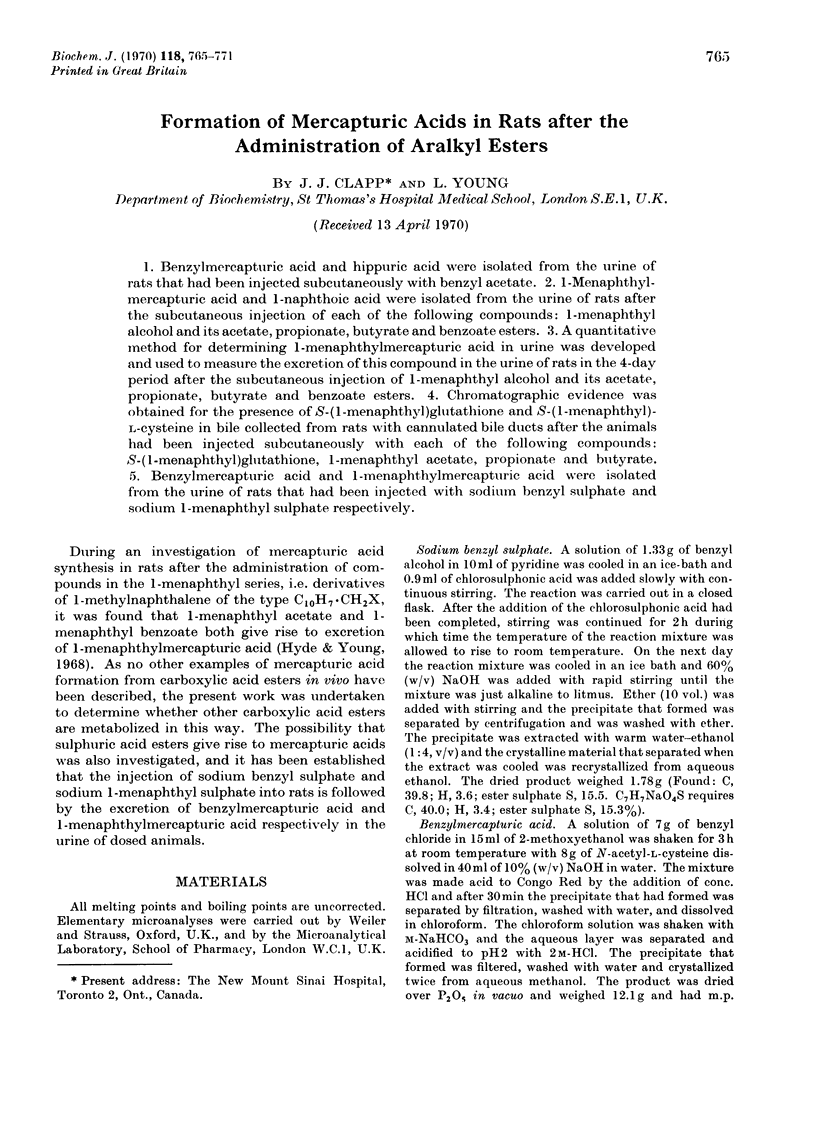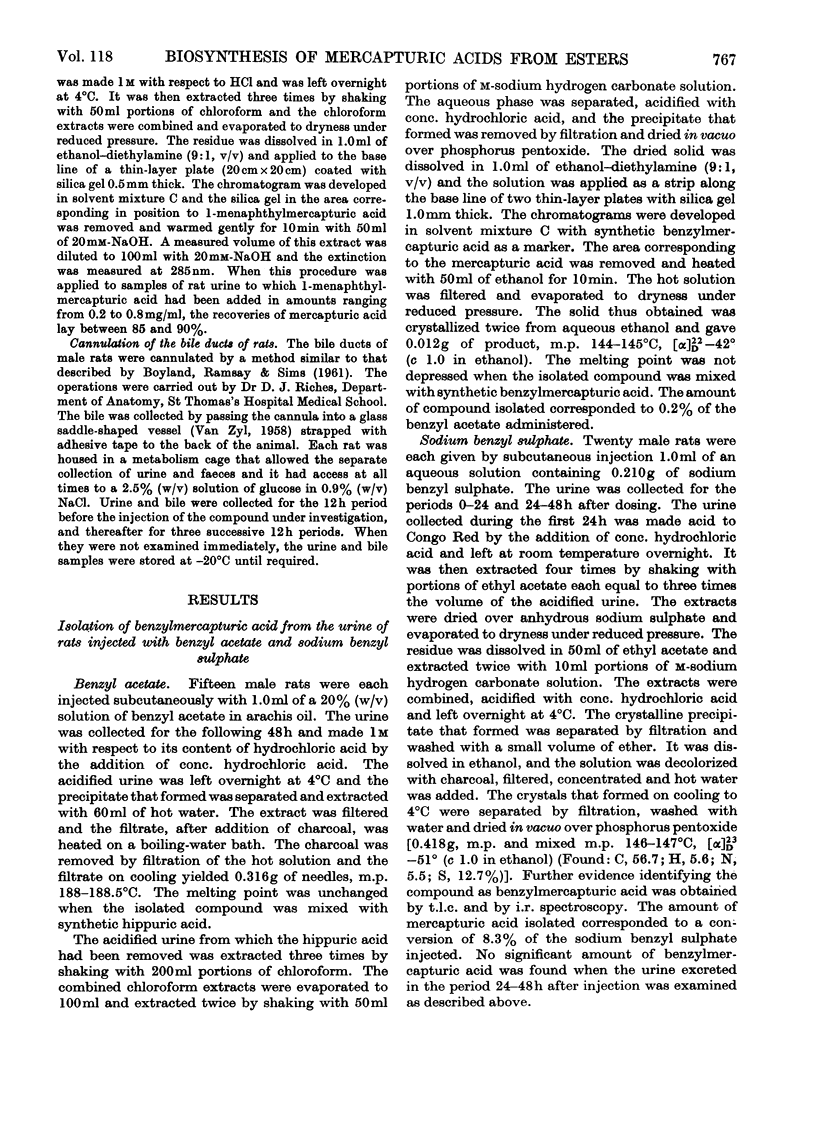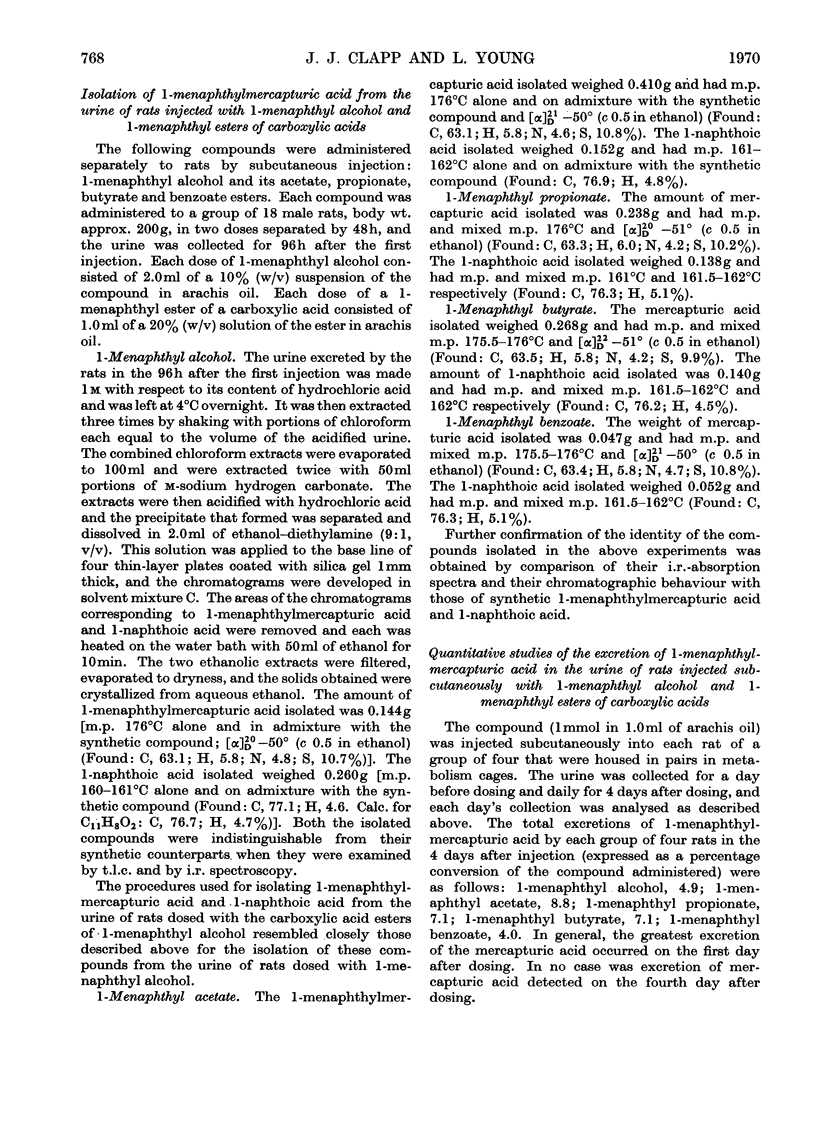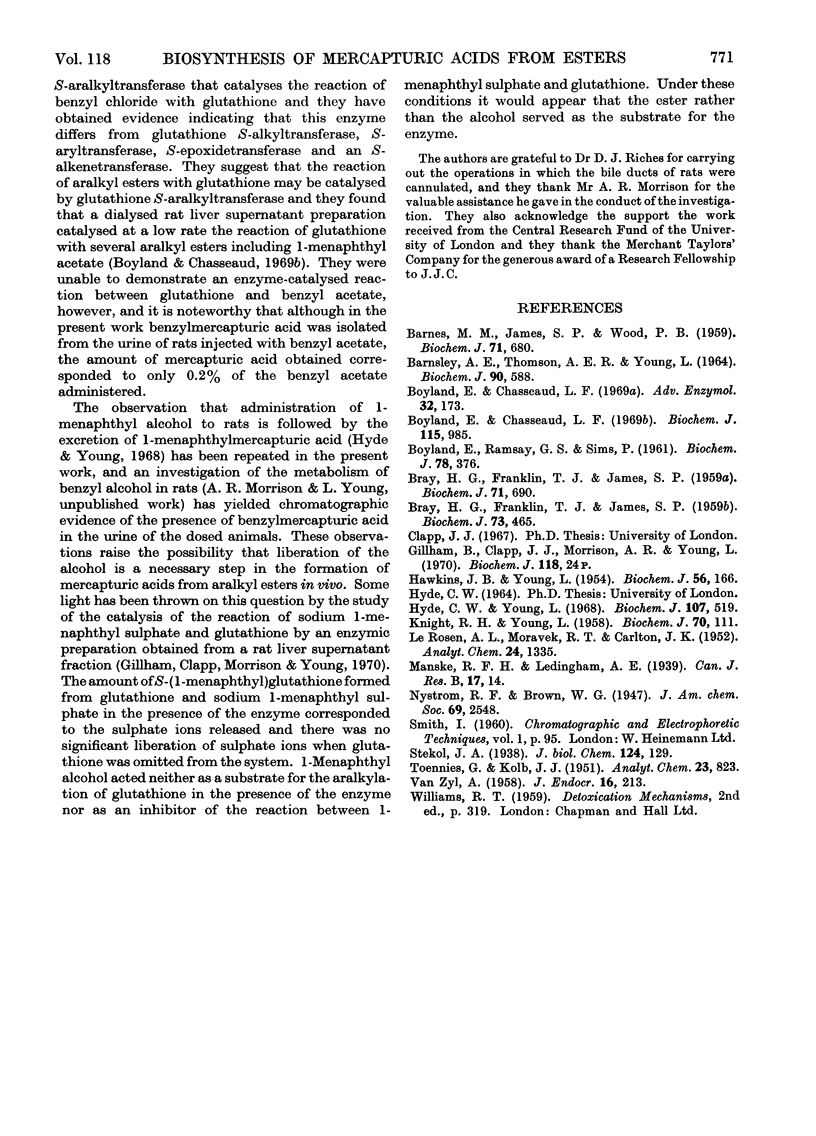Abstract
1. Benzylmercapturic acid and hippuric acid were isolated from the urine of rats that had been injected subcutaneously with benzyl acetate. 2. 1-Menaphthylmercapturic acid and 1-naphthoic acid were isolated from the urine of rats after the subcutaneous injection of each of the following compounds: 1-menaphthyl alcohol and its acetate, propionate, butyrate and benzoate esters. 3. A quantitative method for determining 1-menaphthylmercapturic acid in urine was developed and used to measure the excretion of this compound in the urine of rats in the 4-day period after the subcutaneous injection of 1-menaphthyl alcohol and its acetate, propionate, butyrate and benzoate esters. 4. Chromatographic evidence was obtained for the presence of S-(1-menaphthyl)glutathione and S-(1-menaphthyl)-l-cysteine in bile collected from rats with cannulated bile ducts after the animals had been injected subcutaneously with each of the following compounds: S-(1-menaphthyl)glutathione, 1-menaphthyl acetate, propionate and butyrate. 5. Benzylmercapturic acid and 1-menaphthylmercapturic acid were isolated from the urine of rats that had been injected with sodium benzyl sulphate and sodium 1-menaphthyl sulphate respectively.
Full text
PDF






Selected References
These references are in PubMed. This may not be the complete list of references from this article.
- BARNES M. M., JAMES S. P., WOOD P. B. The formation of mercapturic acids. 1. Formation of mercapturic acid and the levels of glutathione in tissues. Biochem J. 1959 Apr;71(4):680–690. doi: 10.1042/bj0710680. [DOI] [PMC free article] [PubMed] [Google Scholar]
- BRAY H. G., FRANKLIN T. J., JAMES S. P. The formation of mercapturic acids. 2. The possible role of glutathionase. Biochem J. 1959 Apr;71(4):690–696. doi: 10.1042/bj0710690. [DOI] [PMC free article] [PubMed] [Google Scholar]
- BRAY H. G., FRANKLIN T. J., JAMES S. P. The formation of mercapturic acids. 3. N-Acetylation of S-substituted cysteines in the rabbit, rat and guinea pig. Biochem J. 1959 Nov;73:465–473. doi: 10.1042/bj0730465. [DOI] [PMC free article] [PubMed] [Google Scholar]
- Barnsley E. A., Thomson A. E., Young L. Biochemical studies of toxic agents. 15. The biosynthesis of ethylmercapturic acid sulphoxide. Biochem J. 1964 Mar;90(3):588–596. doi: 10.1042/bj0900588. [DOI] [PMC free article] [PubMed] [Google Scholar]
- Boyland E., Chasseaud L. F. Glutathione S-aralkyltransferase. Biochem J. 1969 Dec;115(5):985–991. doi: 10.1042/bj1150985. [DOI] [PMC free article] [PubMed] [Google Scholar]
- Boyland E., Chasseaud L. F. The role of glutathione and glutathione S-transferases in mercapturic acid biosynthesis. Adv Enzymol Relat Areas Mol Biol. 1969;32:173–219. doi: 10.1002/9780470122778.ch5. [DOI] [PubMed] [Google Scholar]
- Boyland E., Ramsay G. S., Sims P. Metabolism of polycyclic compounds. 18. The secretion of metabolites of naphthalene, 1:2-dihydronaphthalene and 1:2-epoxy-1:2:3:4-tetrahydronaphthalene in rat bile. Biochem J. 1961 Feb;78(2):376–384. doi: 10.1042/bj0780376. [DOI] [PMC free article] [PubMed] [Google Scholar]
- Gillham B., Clapp J. J., Morrison A. R., Young L. The interaction of sulphate esters and glutathione in vivo. Biochem J. 1970 Jun;118(2):24P–25P. doi: 10.1042/bj1180024pb. [DOI] [PMC free article] [PubMed] [Google Scholar]
- HAWKINS J. B., YOUNG L. Biochemical studies of toxic agents. V. Observations on the fate of 35S-labelled arylsulphuric acids following their administration of the rat. Biochem J. 1954 Jan;56(1):166–170. doi: 10.1042/bj0560166. [DOI] [PMC free article] [PubMed] [Google Scholar]
- Hyde C. W., Young L. Biochemical studies of toxic agents. The metabolic formation of 1- and 2-menaphthylmercapturic acid. Biochem J. 1968 Apr;107(4):519–522. doi: 10.1042/bj1070519. [DOI] [PMC free article] [PubMed] [Google Scholar]
- KNIGHT R. H., YOUNG L. Biochemical studies of toxic agents. 11. The occurrence of premercapturic acids. Biochem J. 1958 Sep;70(1):111–119. doi: 10.1042/bj0700111. [DOI] [PMC free article] [PubMed] [Google Scholar]
- VAN ZYL A. Note on the effects of thyroidectomy and thyroid hormone administration on the concentration of bile cholesterol and cholic acid. J Endocrinol. 1957 Dec;16(2):213–216. doi: 10.1677/joe.0.0160213. [DOI] [PubMed] [Google Scholar]


